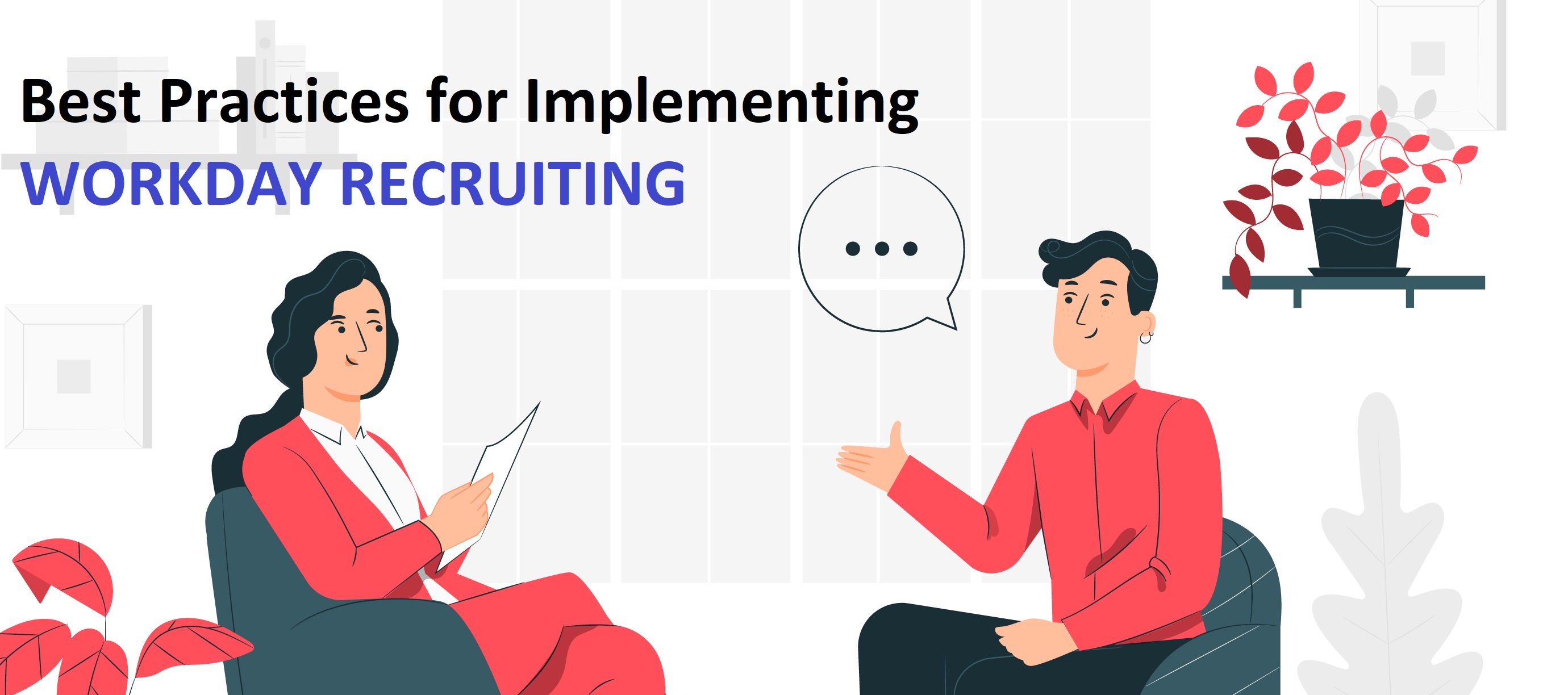
It doesn’t matter much how user-friendly you make your automated recruiting processes if they don’t work smoothly together. However, if you execute this part of your implementation well, you will enjoy the rewards of a well-oiled machine. Done badly, it will be an ongoing source of pain.
In our twenty years of implementing recruiting platforms, the most important phase of implementation has been the planning. This article is meant to alert you to some of the things you need to prepare in advance for your implementation to make the many processes work together.
Process Mapping
Carefully map each existing process in recruiting and update them as you make changes. Include connections to other processes, and document the data flow for integrations with external processes. Attach data mapping tables, protocols, and encryption types for each integration.
Job Profiles
Define and format your job descriptions to Workday® specifications. Job descriptions and qualifications automatically populate requisitions, and users can edit the text after it populates. Save user rework by standardizing as much as possible.
- If you have information in the Job Summary field, it can be populated in the Job Description, but it will present some formatting challenges.
- We do not recommend repurposing fields in the Job Profile. They can impact candidate-facing search functions in Recruiting.
- Fields in the job profile will be visible to external users. Make sure the fields and lists of values are in plain language that external users will understand. Don’t expose codes or jargon that will confuse users.
Integrating with Existing Workday® Recruiting Processes
Consider existing business processes in Workday® that may interact with Recruiting. For each process, decide whether you will add steps to bring Recruiting into the process or configure the process in Recruiting with appropriate additional steps or approvals. These processes include Job Requisitions (Change, Freeze, Close), Hire (Propose Compensation, Background Check), Change Job (Propose Compensation Change), Contract Contingent Worker, and On-boarding.
Requisitions
Job requisitions are required in Workday®. Decide if you will require requisitions based on the position management staffing model or based on specific rules using job management, or both. Determine if you will use job requisition numbers. Consider also whether you want users to be able to override requisitions.
Job Postings in Workday®
Standardize your job posting layouts using templates in Workday®. Remember that over time the number of templates will tend to proliferate. Conduct a periodic audit to remove obsolete or redundant templates.
Prepare both internal and external career sites to make open jobs easy to find for both internal and external candidates. In the career sites, provide information resources, such as social media links, information about the company, and any other branding info. You may want to work with Marketing or engage a professional copywriter to help with your career site. You only get one chance to make a first impression.
Enable integration with your employee referral program and make it easy for employees to find open jobs and refer them.
Candidate Management in Workday®
You can create up to seven candidate stages in any order to manage the process and report on candidate status: Review, Screen, Assessment, Interview, Reference Check, Offer, and Background Check. Prepare to integrate with internal and external processes appropriate for each stage by gathering the requirements for each integration.
Talent Management Activities
Organizations rarely have all the bench strength they need. Including external prospects in succession pools can improve bench strength and contingency planning. Employee profiles make it easier for employees to apply for open positions and recruiters to mine for talent. They also make it easier to find specialized skills for upcoming projects. Encourage employees to regularly update their profiles to be considered for new roles or special projects.
Localization in Workday® Recruiting
Although you will not want to begin actual translations until you finalize the language in your tenant, there are some things you need to know in advance:
- Workday® provides translations with delivered fields and values unless a language has not yet been implemented.
- To present job posting titles and description fields, you will need to provide a duplicate translated posting.
- Customers must provide translated career sites.
- Customers must translate all customer-specific fields and values.
- Custom business process notifications can be translated, but there is no way to determine the preferred language of the user. For now, create duplicated translated messages in notifications.
A Final Thought
If you have challenges in recruiting skills, better automation will not improve them. If your recruiters are not skilled at winning candidates, Workday® Recruiting won’t make them better. If your managers are not talent magnets, it won’t make them more attractive.
You can, however, use this opportunity to re-engage and upskill your people to recruit better.
Pixentia is a full-service technology company dedicated to helping clients solve business problems, improve the capability of their people, and achieve better results.



